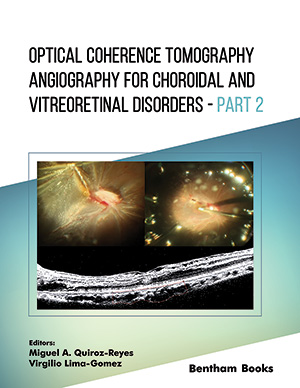摘要
背景:海马体、内嗅皮质和梭状回是在早期阿尔茨海默病 (AD) 期间恶化的大脑区域。 ApoE4 等位基因已被确定为 AD 发展的危险因素,与大脑中淀粉样蛋白 β (Aβ) 斑块聚集的增加有关,并导致海马区萎缩。然而,据我们所知,尚未研究 AD 患者随时间恶化的速度,无论是否有 ApoE4 等位基因。 方法:在这项研究中,我们首次使用阿尔茨海默氏病神经影像学倡议 (ADNI) 数据集分析有和没有 ApoE4 的 AD 患者的这些脑结构萎缩。 结果:发现这些脑区体积在 12 个月内的减少率与 ApoE4 的存在有关。此外,与之前的研究不同,我们发现女性和男性患者的神经萎缩没有差异,这表明 ApoE4 的存在与 AD 中的性别差异无关。 结论:我们的结果证实并扩展了之前的发现,表明 ApoE4 等位基因逐渐影响受 AD 影响的大脑区域。
关键词: 阿尔茨海默病,海马体,APOE基因,内嗅皮层,梭状回,疾病进展,性别差异。
[http://dx.doi.org/10.3233/JAD-2012-121408] [PMID: 23047370]
[http://dx.doi.org/10.18632/oncotarget.7797] [PMID: 26950278]
[http://dx.doi.org/10.1016/j.nbd.2014.07.011] [PMID: 25092575]
[http://dx.doi.org/10.1515/revneuro-2017-0036] [PMID: 28949931]
[http://dx.doi.org/10.1002/hipo.23304] [PMID: 33523577]
[http://dx.doi.org/10.1523/JNEUROSCI.1615-08.2008] [PMID: 18596169]
[http://dx.doi.org/10.3389/fnsys.2013.00045] [PMID: 24009563]
[http://dx.doi.org/10.1016/j.neuroimage.2021.118689] [PMID: 34742943]
[http://dx.doi.org/10.1101/2021.01.16.426538]
[http://dx.doi.org/10.1016/B0-12-227210-2/00232-6]
[http://dx.doi.org/10.1101/lm.1357309] [PMID: 19553381]
[http://dx.doi.org/10.1016/j.neures.2014.02.012] [PMID: 24642278]
[http://dx.doi.org/10.1002/hipo.23041] [PMID: 30311282]
[http://dx.doi.org/10.1111/bpa.13005] [PMID: 34269494]
[http://dx.doi.org/10.4103/0972-2327.104323] [PMID: 23349586]
[http://dx.doi.org/10.1016/j.neuroscience.2019.11.021] [PMID: 31812493]
[http://dx.doi.org/10.1515/revneuro-2016-0086] [PMID: 28422707]
[http://dx.doi.org/10.1016/j.neuron.2015.06.013] [PMID: 26139366]
[http://dx.doi.org/10.1007/s13205-022-03123-4] [PMID: 35116217]
[http://dx.doi.org/10.1016/j.expneurol.2021.113969] [PMID: 34973962]
[PMID: 24959551]
[http://dx.doi.org/10.1002/hipo.450010102] [PMID: 1669339]
[http://dx.doi.org/10.1136/jnnp.65.3.322] [PMID: 9728943]
[http://dx.doi.org/10.3389/fnagi.2020.00176] [PMID: 32714177]
[http://dx.doi.org/10.1109/RBME.2018.2796598] [PMID: 29994606]
[http://dx.doi.org/10.3389/fnins.2020.00804] [PMID: 32973425]
[http://dx.doi.org/10.1038/nn.3606] [PMID: 24362760]
[http://dx.doi.org/10.1016/j.pneurobio.2014.02.004] [PMID: 24548606]
[http://dx.doi.org/10.1016/j.arr.2021.101307] [PMID: 33621703]
[http://dx.doi.org/10.1002/1098-1063(2000)10:4<457::AIDHIPO12>3.0.CO;2-Z] [PMID: 10985285]
[http://dx.doi.org/10.1098/rstb.2012.0516] [PMID: 24366130]
[http://dx.doi.org/10.1016/j.neuroimage.2012.01.075] [PMID: 22289801]
[http://dx.doi.org/10.1186/s13148-020-00916-3] [PMID: 32854783]
[http://dx.doi.org/10.1016/j.celrep.2017.12.066] [PMID: 29346778]
[http://dx.doi.org/10.1007/s12035-018-1237-z] [PMID: 30032423]
[http://dx.doi.org/10.1073/pnas.0600549103] [PMID: 16567625]
[http://dx.doi.org/10.1016/j.nbd.2020.104784] [PMID: 32027932]
[http://dx.doi.org/10.1038/s43587-021-00073-z] [PMID: 35291561]
[http://dx.doi.org/10.1212/WNL.0000000000011270] [PMID: 33262228]
[http://dx.doi.org/10.3233/JAD-170540] [PMID: 29278888]
[http://dx.doi.org/10.1002/ana.26043] [PMID: 33550655]
[http://dx.doi.org/10.1016/j.neuron.2016.04.009] [PMID: 27161522]
[http://dx.doi.org/10.1038/nm0198-097] [PMID: 9427614]
[http://dx.doi.org/10.1016/0306-4522(95)00331-C] [PMID: 8596645]
[http://dx.doi.org/10.1186/s13195-020-00712-4] [PMID: 33148345]
[http://dx.doi.org/10.1016/0304-3940(95)11343-6] [PMID: 7783963]
[http://dx.doi.org/10.1523/JNEUROSCI.22-24-10539.2002] [PMID: 12486146]
[http://dx.doi.org/10.1111/jnc.13417] [PMID: 26526158]
[http://dx.doi.org/10.2174/1567205015666180613111504] [PMID: 29895246]
[http://dx.doi.org/10.1093/brain/awac096] [PMID: 35289363]
[http://dx.doi.org/10.3233/JAD-150262] [PMID: 26401700]
[http://dx.doi.org/10.1093/brain/awy132] [PMID: 29850777]
[http://dx.doi.org/10.1097/WAD.0b013e3181f5dd97] [PMID: 20847636]
[http://dx.doi.org/10.1016/S0028-3908(99)00157-4] [PMID: 10698015]
[PMID: 15038457]
[http://dx.doi.org/10.1002/(SICI)1099-1166(199809)13:9<625::AID-GPS835>3.0.CO;2-2] [PMID: 9777427]
[http://dx.doi.org/10.1016/j.jneumeth.2020.109040] [PMID: 33345945]
[http://dx.doi.org/10.3389/fcomp.2020.551481]
[http://dx.doi.org/10.1038/s41598-020-74399-w] [PMID: 33547343]
[http://dx.doi.org/10.1093/brain/awaa137] [PMID: 32357201]
[http://dx.doi.org/10.1038/s41598-019-54548-6] [PMID: 31796817]
[http://dx.doi.org/10.1016/j.concog.2018.12.003] [PMID: 30593998]
[http://dx.doi.org/10.1002/jnr.23827] [PMID: 27870425]
[http://dx.doi.org/10.1016/j.plipres.2010.09.001] [PMID: 20854843]
[http://dx.doi.org/10.1038/s41467-017-01444-0] [PMID: 29133888]
[http://dx.doi.org/10.1038/s41598-021-97117-6] [PMID: 34475505]
[http://dx.doi.org/10.1177/0271678X20952012] [PMID: 32936729]
[http://dx.doi.org/10.1016/j.neuroimage.2022.118966] [PMID: 35122970]
[http://dx.doi.org/10.1212/01.WNL.0000106462.72282.90] [PMID: 14872024]
[http://dx.doi.org/10.1136/jnnp.71.4.441] [PMID: 11561025]
[http://dx.doi.org/10.1159/000324711] [PMID: 21494034]
[http://dx.doi.org/10.1515/revneuro-2015-0019] [PMID: 26444348]
[http://dx.doi.org/10.1016/j.neurobiolaging.2021.11.004] [PMID: 34963063]
[http://dx.doi.org/10.1016/S1474-4422(07)70106-0] [PMID: 17509484]
[http://dx.doi.org/10.1016/0306-4522(95)00014-A] [PMID: 7477910]
[http://dx.doi.org/10.3389/fnagi.2021.639529] [PMID: 34149392]
[http://dx.doi.org/10.3233/JAD-210140] [PMID: 34151793]
[http://dx.doi.org/10.3389/fphar.2020.00279] [PMID: 32231570]
[http://dx.doi.org/10.1016/j.jalz.2018.04.008] [PMID: 29907423]
[http://dx.doi.org/10.1038/s41582-018-0032-9] [PMID: 29985474]
[http://dx.doi.org/10.1001/jama.1997.03550160069041] [PMID: 9343467]
[http://dx.doi.org/10.1111/ene.13987] [PMID: 31102429]
[http://dx.doi.org/10.3233/JAD-181234] [PMID: 31127771]
[http://dx.doi.org/10.1177/1745506518817995]
[PMID: 28179815]
[http://dx.doi.org/10.1016/j.yfrne.2020.100879] [PMID: 33137359]
[http://dx.doi.org/10.3389/fnagi.2019.00315] [PMID: 31803046]
[http://dx.doi.org/10.1515/revneuro-2017-0066] [PMID: 29466242]
[http://dx.doi.org/10.1093/jnen/nlw047] [PMID: 27297671]
[http://dx.doi.org/10.18632/oncotarget.5185] [PMID: 26397226]
[http://dx.doi.org/10.1001/jama.1993.03500200051032] [PMID: 8487446]
[PMID: 7977338]
[http://dx.doi.org/10.1002/dad2.12121] [PMID: 33251322]
[http://dx.doi.org/10.1212/WNL.0000000000003288] [PMID: 27708128]
[http://dx.doi.org/10.1212/WNL.0000000000002570] [PMID: 26984945]
[http://dx.doi.org/10.3233/JAD-160716] [PMID: 28106548]
[http://dx.doi.org/10.1001/archneur.59.10.1589] [PMID: 12374497]
[http://dx.doi.org/10.3389/frai.2022.680165] [PMID: 35280233]
[http://dx.doi.org/10.34257/GJMRFVOL20IS6PG1] [PMID: 32982106]
[http://dx.doi.org/10.3233/JAD-2006-9S311] [PMID: 16914848]
[http://dx.doi.org/10.1126/science.aad8373]
[http://dx.doi.org/10.1006/exnr.1998.6860] [PMID: 9743577]
[http://dx.doi.org/10.1212/01.WNL.0000098935.36984.25] [PMID: 14694028]
[http://dx.doi.org/10.1016/j.expneurol.2016.04.014] [PMID: 27085394]
[http://dx.doi.org/10.1073/pnas.2121655119] [PMID: 35135885]
[http://dx.doi.org/10.1152/physrev.00042.2020] [PMID: 34254836]
[http://dx.doi.org/10.1126/science.aac8128]
[http://dx.doi.org/10.3389/fnsys.2015.00042] [PMID: 25859189]
[http://dx.doi.org/10.1016/j.brainres.2012.11.020] [PMID: 23178699]
[http://dx.doi.org/10.1016/j.neunet.2011.02.006] [PMID: 21411277]
[http://dx.doi.org/10.3389/fncom.2020.00080] [PMID: 33224031]





























